 |
||||||||||||||||||
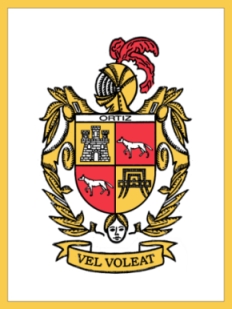
|
||||||||||||||||||
|
A company awarded: One for TECHNOLOGY and the Other one for QUALITY, and the Commercial Prestige Trophy. Scientific Fertilizer: By intelligent programming Revolutionizing Farming and Livestock OPTIMUM FERTILIZERS FOR AN INTEGRATED PRODUCTION Any other fertilizer is not necessary by using PRICE FOR CUSTOMERS OF FERTILIZERS: 47 € ALL OVER THE WORLD. INCLUDING DELIVERY. PRODUCTION RECORD WITH
Gold, silver and bronze medals obtained in several countries by vinegrowers fertilizing with
Our brands:
With neither Hormones, Steroids nor Stimulants.
They aren't lost by lixiviation. They don't add salt nor increase the nitrate contains in plants nor in soil. CEN, KLEN, TON and EKOLOGIK are sophisticated fertilizers ready to work in an intensive organic farming in an agressive competitivity. They give all the necessary elements (N.P.K., microelements, etc...) and they can substitute completely the traditional fertilizers. To check them, soil and plants can be analyzed before applying
They are soluble in water, they are easy to be applicated; they can be mixed with whichever type of phitosanitary products and herbicides; they can be applied mixed with water whether onto leaves or onto soil, or directly onto seed by irrigation, or injected into the trunk. |
||||||||||||||||||
VERY IMPORTANT:
TYPES of FERTILIZERS and OTHERS:
DOSAGE: 1-3 bottles per Ha. or 4 bottles if harvest is expected to be a great one;it is usually to apply 2 bottles in the beginning and 1 or 2 bottles at mid-cultivation. Bottles are applied diluted in water; either onto soil, or onto leaves, onto seeds or injected into the trunk (plant absorbs it through these four ways); water, when sprayed onto soil or plant is optional, from 100 to 1,500 l. per Ha. can be applied (water is just the carrier vehicle). For small fields, apply 1 cap per a 15 litres pump-backpack sprayer. In flood crops such as rice, alfalfa, etc, a 50 litres container can be installed with a tap watering drop by drop for 2 or more hours or for the total time of the irrigation. HOW TO USE THEM ONE CAP OF THE BOTTLE IN A 15 L. BACKPACK SAPRAYER. Dose per Hª. (Two acres) CEREALS - Rice: 2 CEN 15 plus 1 CEN 4 on newly born leaves, alone or combined with herbicide. - Corn: 2 CEN 20 before seeding and another 2 CEN 15 when corn is 30-50 cm. high. taking advantage of another treatment. 4 CEN 9 for forage corn. . - Wheat, barley, oats, rye, sorghum: 1-2 CEN per Ha. with the herbicide sprayer before seeding or after emergence with the same quantity of water used with herbicides. At mid-cultivation, 1-2 CEN 15 per Ha. with the herbicide or alone. During flowering, half a bottle of CEN per hectare. - Sunflower: 1 CEN for 1 Ha. sprayer onto soil before or after seeding. FRUIT TREES - Almond, walnut, hazelnut trees: 1 - 2 CEN 15 before flowering. Afterwards, if there is a heavy load, 1 CEN 4. Onto soil, dripping or onto leaves. - Citrus, orange, mandarin, grapefruit, lemon trees, etc.: In winter, 2 CEN onto soil, dripping or onto leaves. At mid-cultivation, 2 CEN 20 and 1 CEN 4 onto soil, dripping or onto leaves. On Clementine and Hernandina add CEN 10 at mid-cultivation. Lemon trees, 2 CEN 20 + 2 CEN 15. All CENs can be mixed with any phytosanitarie. - Late citrus: Late mandarine, orange, lemon,etc.: use CEN 4, CEN 20 and CEN 10: fattening, sugar, colour and to delay harvest. - Early citrus: early mandarine, orange, lemon, etc.: use CEN 4, CEN 20 and CEN 13: - Apple, figs: 2 CEN before flowering onto soil or leaves. Fruit setting, 1 CEN 10 + 1 CEN 4 onto leaves. Red apple, 1-2 CEN 13 onto leaves. Figs, 2 CEN 9 at the beginning and 1 CEN 10 at mid-cultivation. - Peach, nectarine: 2 CEN before flowering onto soil or leaves. Once fruit has set 1 CEN 20 plus 1-2 CEN 4 onto leaves. For sugar apply 2 CEN 17. - Olives: 1-2 CEN 15 for 100 olive trees in winter, alone or with herbicide, onto soil, leaves or sprayed onto trunk. In September-October, 1-2 CEN 15 onto soil, leaves or sprayed onto one of the trunks of the olive tree. For soil, use a dispensing dosage proportioner and apply CEN at a rate of 1.4 cc per tree, applying it to soil at one metre from the trunk For setting 1 CEN 4 during flowering. - Intensive olive tree: 2 CEN in winter and 2 half-way through fattening. - Pear, cherry, apricot, pomegranate, plum, persimmon: 1-2 CEN before flowering onto soil or leaves. After fruit has set, 1-2 CEN 4, onto leaves or onto soil. Cherry, another 1-2 CEN 13 onto soil. VEGETABLES - Green beans, haricot beans, aubergines, broccoli, Swiss chard, cabbage, cauliflower, borage, cardoon, artichoke, peas, peppers: 1-2 CEN at the beginning. At mid-cultivation, 5 ml. CEN 4 in 15 litres of water, onto leaves; several applications. Artichokes: at mid-cultivation, 2 CEN 9 + 1 CEN 4. Broccoli: 2 CEN + 2 CEN 9 to bring forward harvest. - Potato, cassava, onion, garlic, leek, carrot, radish, turnip: 2 CEN 20 during seeding and another 2 CEN 15 at mid-cultivation. All 4 bottles can be applied at the same time at the beginning. - Lettuce, ruff, asparagus, palmetto: 2 CEN 15 per Ha. at the beginning, which can be applied onto the leaves or soil or onto soil alone or by dripping. At mid-cultivation, another 2 CEN 20 onto leaves or dripping. For ruff, CEN 9. - Melons, water melon, pumpkin: 2 CEN 15 per Ha. at the beginning. When the first melons measure 5-10 cm. apply 1 CEN 20 and 1 CEN 4 per Ha. On small plots of land, 3 ml. of CEN 20 + 3 ml. of CEN 4 in 15 litres of water, several times. - Tomato, cucumber, courgettes: In greenhouse, 2 CEN 15 per Ha. at the beginning, onto soil or leaves. Later, on tomato and cucumber, when several clusters have set, apply 5 ml. of CEN 4 in 15 litres of water every 20 days. On courgettes 5 ml. of CEN 4 in 15 litres of water every week.
TROPICAL PLANTS - Coffee: 1 CEN + 1 CEN 9 before or after flowering. At mid-cultivation, 1CEN 4. When growth is desired, use CEN 9 only. - Mango, avocado, custard apple, loquat, papaya, civet fruit: 1 CEN 20 + 1 CEN 4 every 3 or 4 months. Onto leaves, onto soil or dripping. Mango, 1 CEN + 1 CEN 9 every 3 months. - Palm oil: 1-2 CEN every application. 4 times a year, onto soil or sprayed onto trunk. - Pineapple: 2 CEN at the beginning. At mid-cultivation, 2 CEN 20 + 1 CEN 13. - Plantain, banana: 2 CEN onto soil, for 1.500 plants, every six months, plus 100 cc of CEN 4 onto cluster onto leaves or soil, every two months. CEN 7 to bring ripening forward. CEN 24 against fungi and bacteria. - Sugar cane: 2 CEN 15: one at the beginning and another of CEN 9 when it measures 20-40 cm. high. OTHER CROPS
-Alfalfa, clover, ryegrass, turf, forage: 2 CEN 15 per Ha. every year, taking advantage of application of insecticide. Distibute in 3-4 cuts. Forage: 3 CEN 15 every year. - Cotton: 1-3 CEN onto soil before or after seeding. - Forest trees, pine, black poplar, growing trees: 2 CEN 15 every 6 months onto soil, dripping or sprayed onto trunk. - Ornamental: flowers, 5 ml. of CEN 15 every month over 100 m². For colour, add 1 ml. of CEN 13 to 1 CEN 20. Growth CEN 7. - Soya, rapeseed, tea: 1-2 CEN 15 during seeding and 1-2 bottles at mid-cultivation. Tea: 1-2 bottles every 3 months. - Tobacco: 1-2 CEN at the beginning. When it measures 40 cm. high, apply 1 CEN 4 onto leaves. - Vineyard, table grape, hops: 1-2 CEN 3 in winter, sprayed onto soil and onto bare stump. After the fruit has set - Hops, American aloe and mulberry: 2 CEN 10 at the beginning + 1 CEN 10 at mid-cultivation. - Sugar beet: 2 CEN 15 at the beginning, which can be applied with the herbicide. 2 CEN 17 for more sugar, 60 days before harvesting. ATTENTION Although we indicate the best applications ways, also it is possible to do a mix with all kinds of CEN necessaries by crop (CEN and complements)and applied all together mixed. They can be applied once or in several times. Onto the soil, seeds, onto the trunk or via foliar. (Before or after sowing, before or after flowering or at half cultivation).
1 - 4 140 C.C. BOTTLES TO FERTILIZE 1 Hª ONTO SOIL OR LEAVES, AT STARTING AND / OR AT MID CULTIVATION. IN GENERAL, ONE CAP OF THE BOTTLE IN A 15 LITRES BACKPACK SPRAY. Harmless for human beings
|
||||||||||||||||||
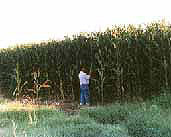
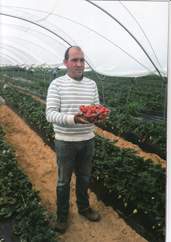
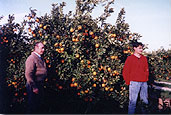
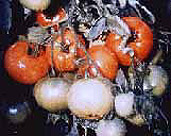
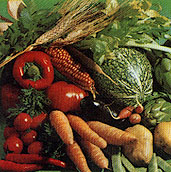
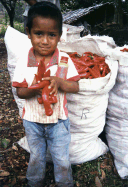
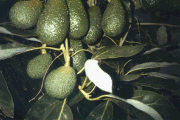

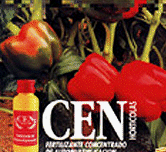
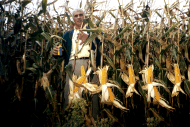
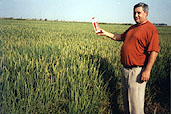
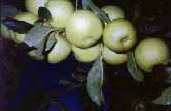

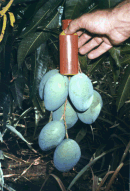
 - Strawberry, celery, blackberry, raspberry: For 2.500 m². every 15 days apply 8 ml. (one cap) of CEN 15 at the beginning. When fruit is setting, apply CEN 10, CEN 13 and CEN 20. Celery: 1-2 CEN at the beginning, + 2 CEN 9 at mid-cultivation. Blackberry: CEN 4. Raspberry: CEN 20 to fruit every 20 days.
- Strawberry, celery, blackberry, raspberry: For 2.500 m². every 15 days apply 8 ml. (one cap) of CEN 15 at the beginning. When fruit is setting, apply CEN 10, CEN 13 and CEN 20. Celery: 1-2 CEN at the beginning, + 2 CEN 9 at mid-cultivation. Blackberry: CEN 4. Raspberry: CEN 20 to fruit every 20 days.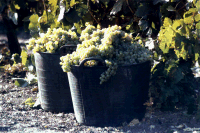 or 60 days before harvesting, 1 CEN 10 onto leaves for wine grape. For table grape 4 CEN 20. For wine colour, CEN 13.
or 60 days before harvesting, 1 CEN 10 onto leaves for wine grape. For table grape 4 CEN 20. For wine colour, CEN 13.